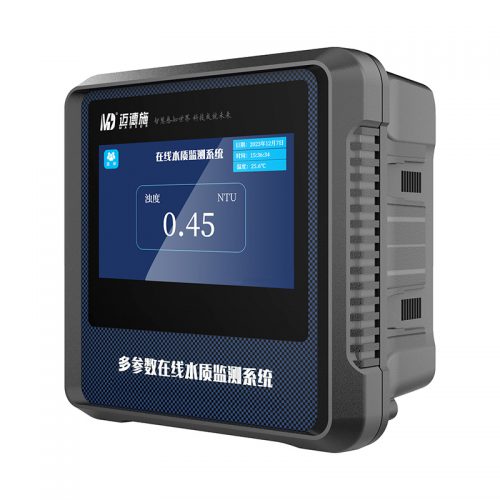principle
The turbidity sensor is based on the infrared scattering light technology, that is, the infrared light emitted by the light source will scatter through the measured sample during the transmission process, and the intensity of the scattered light is directly proportional to the turbidity. The turbidity sensor sets the scattered light receiver in the 90° direction, and obtains the turbidity value by analyzing the intensity of this set of scattered light.
functional characteristics
Infrared scattering light technology, can eliminate the influence of sample color;
Optional cleaning brush automatic cleaning function, greatly reduce the sensor maintenance;
Digital sensor, strong anti-interference ability, the transmission distance is long;
Standard digital signal output, enabling integration and networking with other devices without a controller
Sensor site installation is convenient and fast, to achieve plug and play.
Simple use, reliable results, interface operation instructions can reduce operation errors;
Set up a visual alarm system to provide important alarm functions;
The controller can realize the wall hanging mounting / panel installation / clip pipe installation;
Sensor power supply positive and negative electrode reverse connection protection;
Sensor RS485 A / B terminal with wrong power protection.
Typical application
Online monitoring of turbidity at the water inlet and sedimentation tank of the water plant;
Online monitoring of turbidity in sewage treatment plants, various industrial production processes and wastewater treatment processes.
| Sensor technical parameters: |
| measuring range |
turbidity:0.01-3000 NTU |
| measurement accuracy |
Less than ±5% of the measured value or ±0.5NTU,bigger one |
| repeatability |
3% |
| resolution ratio |
0.01NTU ,0.1NTU, |
| pressure limit |
≤0.1Mpa |
| calibration |
Sample calibration, slope calibration |
| Sensor main materials |
Body :SUS316L; Upper and lower cover :PPS+ glass fiber, cable :PUR |
| Sensor supply voltage |
9~36vDC |
| output |
Output by MODBUS RS-485 |
| storage temperature |
15 to 50°C |
| operating temperature |
0 to 45 ° C (non-freezing) |
| self-cleaning |
Automatic cleaning device can be selected |
| level of protection |
P68 /NEMA6P |
| cable length |
10 m cable is standard and can be extended up to 100 m |
| size |
Diameter 49mm* Length 230.5mm |
| weight |
0.8KG |
Controller parameters
| Model |
MDS-KP500 |
| Display |
4.3 inches, 480*800 resolution, 262K color, IPS screen, wide viewing Angle, with backlight |
| |
Capacitive touch screen with three protection processes (moisture-proof, mildew proof, salt spray proof) |
| Display size |
95.0mm*53.9mm |
| Measuring range |
-99999.0000~99999.0000 |
| Password Protection |
The default password is 0000 |
| Compatible sensor |
Digital sensor |
| Mounting method |
Disk mounting (with chassis), wall-mounted mounting |
| Alarm relay |
2 relays can set high and low alarm |
| Current output |
2 isolated 4-20mA, maximum load 750Q, can be set |
| Communication port |
RS485 Modbus RTU |
| Memory backup |
All user Settings are stored indefinitely in EERPOM |
| historical data |
The storage capacity of 8000 points is recorded at a 5-minute interval |
| Operating environment |
-10~+50℃,0~95% relative humidity, no condensation |
| Storage environment |
-20 to +70 ° C,0 to 95% relative humidity, non-condensing |
| The power supply |
12V±10% |
| Power consumption of the instrument |
less than 6W |
| Instrument size |
144X145X85(mm) |
| Protection class |
IP65 |






